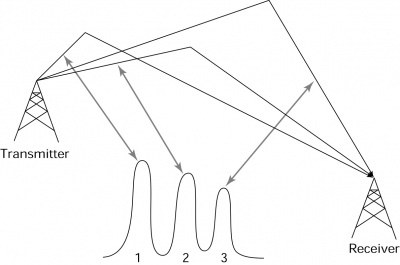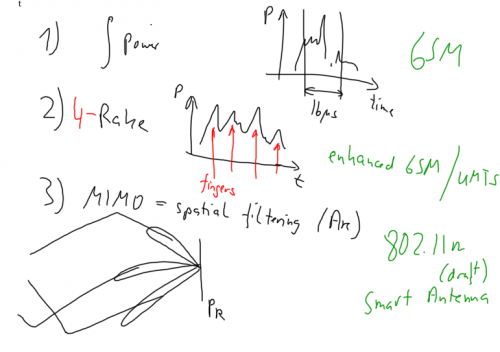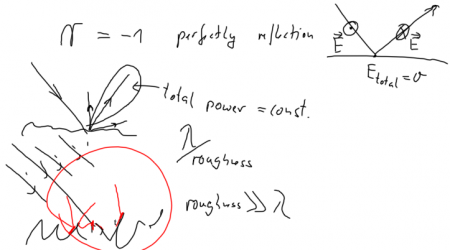Difference between revisions of "B3-Multipath Propagation"
From its-wiki.no
Josef.Noll (Talk | contribs) |
Josef.Noll (Talk | contribs) |
||
| Line 25: | Line 25: | ||
|[[File:ReflectionScattering.png|450px]] | |[[File:ReflectionScattering.png|450px]] | ||
|} | |} | ||
| + | |||
| + | == Related physics == | ||
| + | Free Space impedance <math>Z_0 </math> as connection of permeability <math>\mu_0</math> and permittivity <math>\varepsilon_0</math>. | ||
| + | |||
| + | <math> \mu_0=4 \pi \cdot \10^{-7} N/A^2</math>. The unit of <math>\mu_0</math> is <math>Newton/Ampere^2 N/A^2 = kg m/s^2 1/A^2</math> | ||
| + | |||
| + | <math>\varepsilon_0=\frac{1}{\mu_0 c^2} = 8.854 \cdot \10^{-12} F/m</math>. The unit of <math>\varepsilon_0</math> is Farad/m: <math>F/m = A s/V = A^2 s^4/(kg m^2)</math> | ||
Revision as of 21:09, 20 September 2014
| Wiki for ITS | ||||||
|---|---|---|---|---|---|---|
|
⌘Multipath and how to use it

|
Multipath propagation can be used through
|
⌘Comments
⌘ Reflection
Related physics
Free Space impedance as connection of permeability
and permittivity
.
. The unit of
is
. The unit of
is Farad/m:

